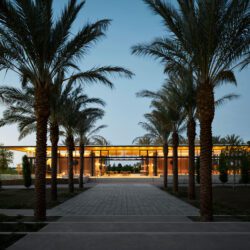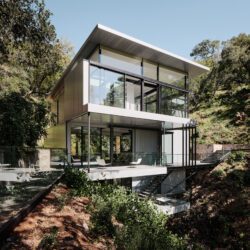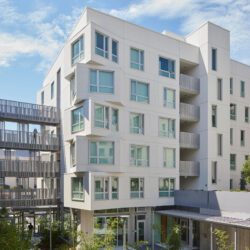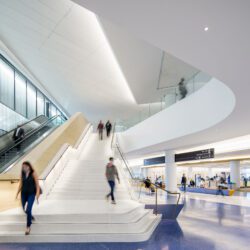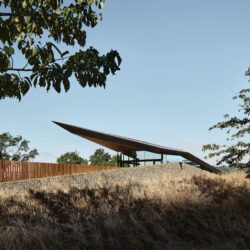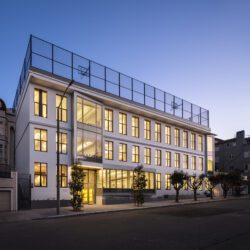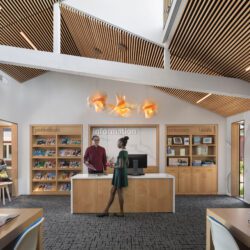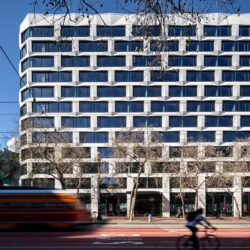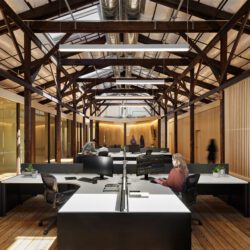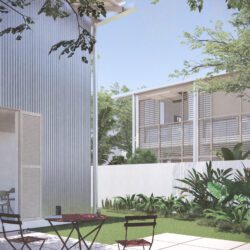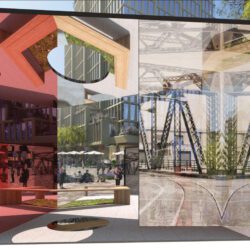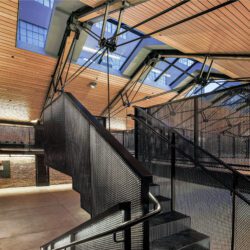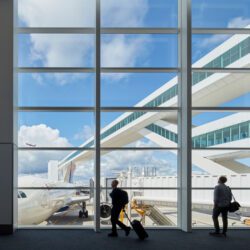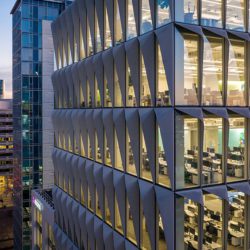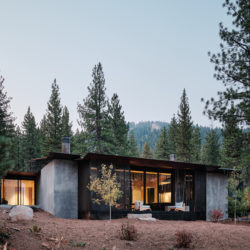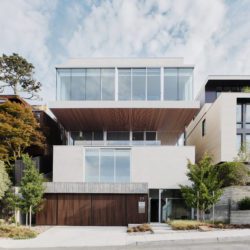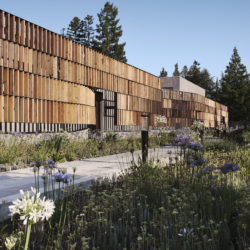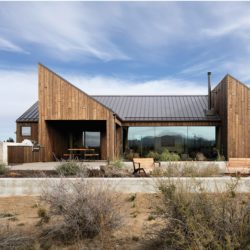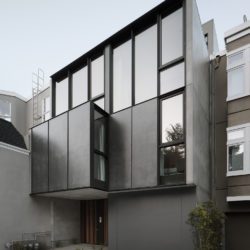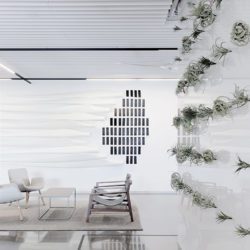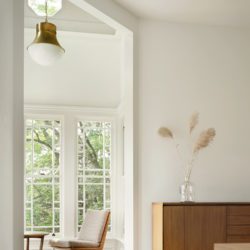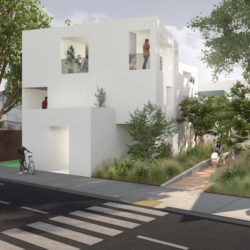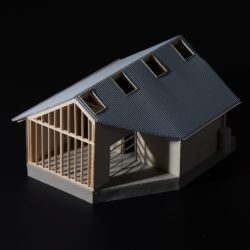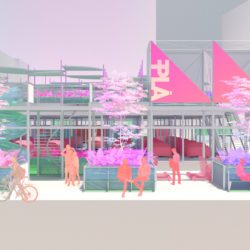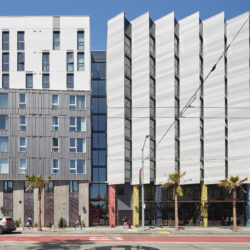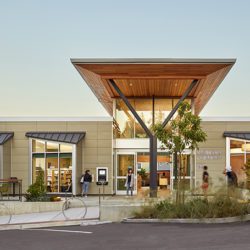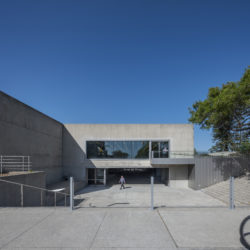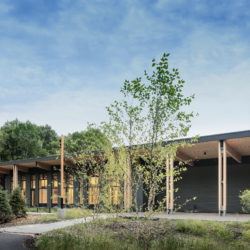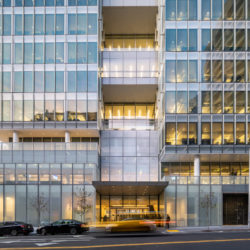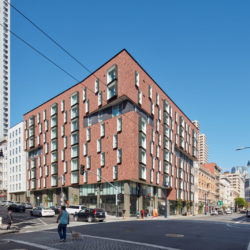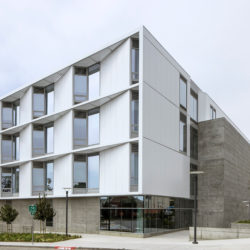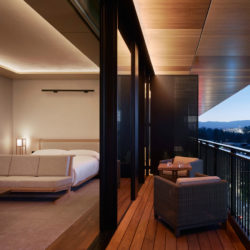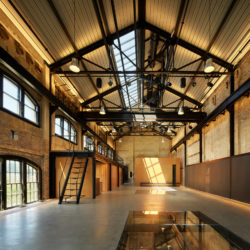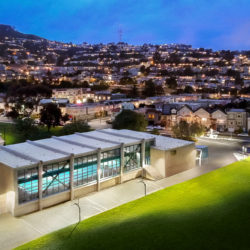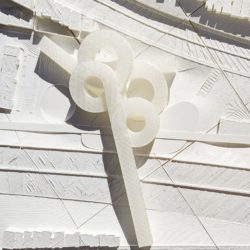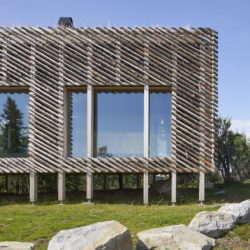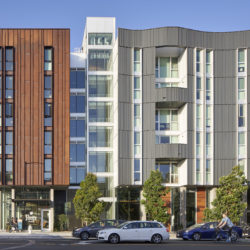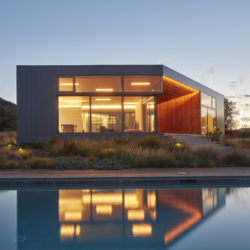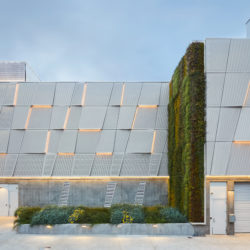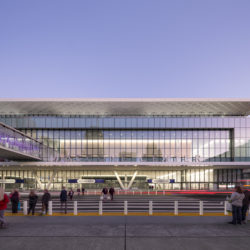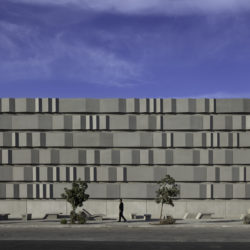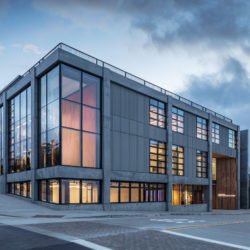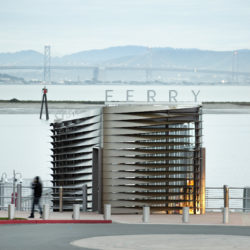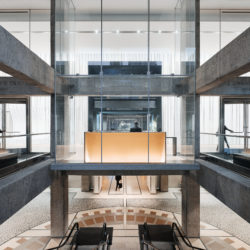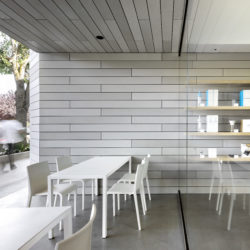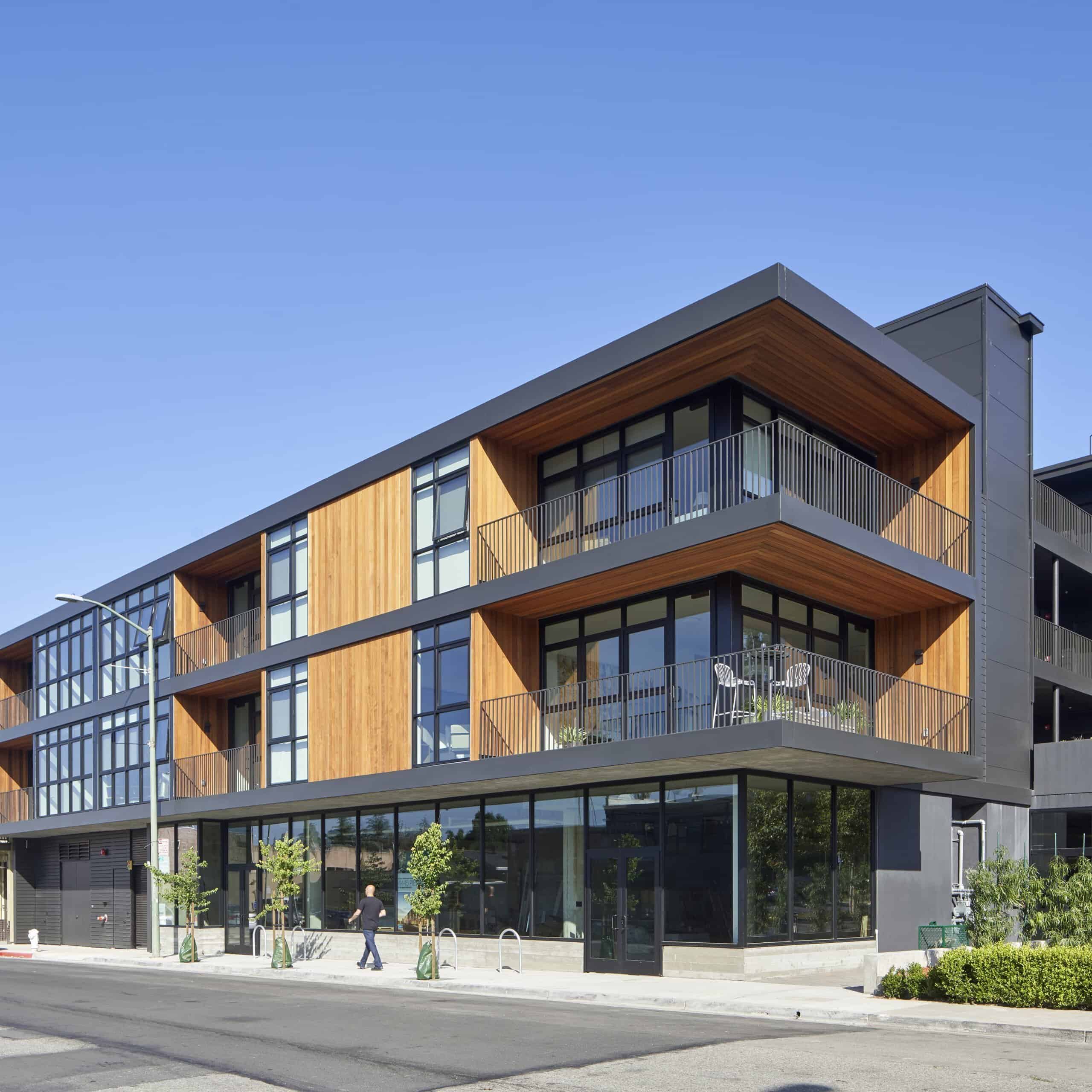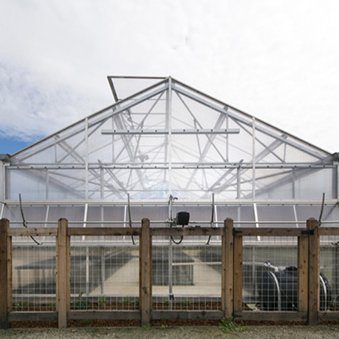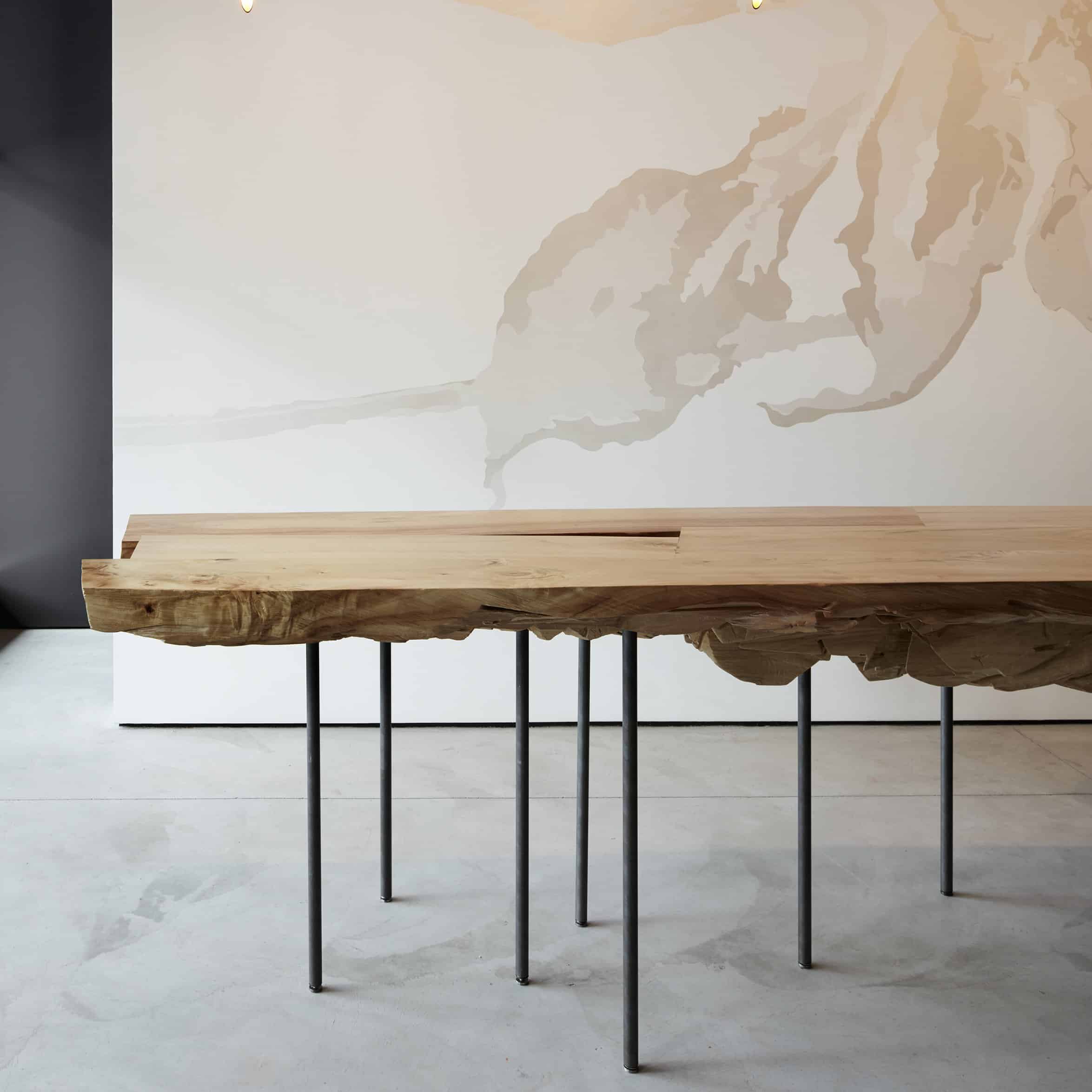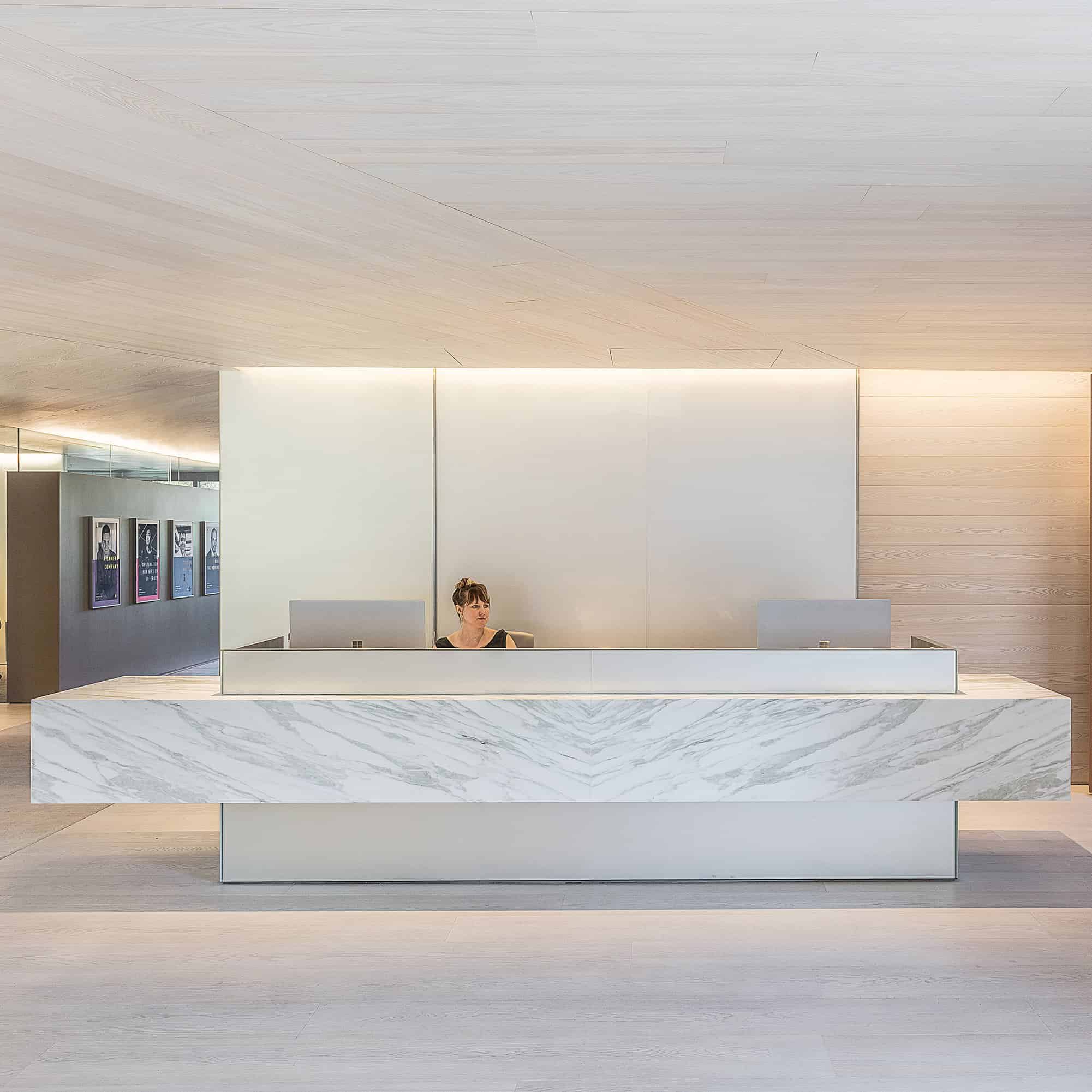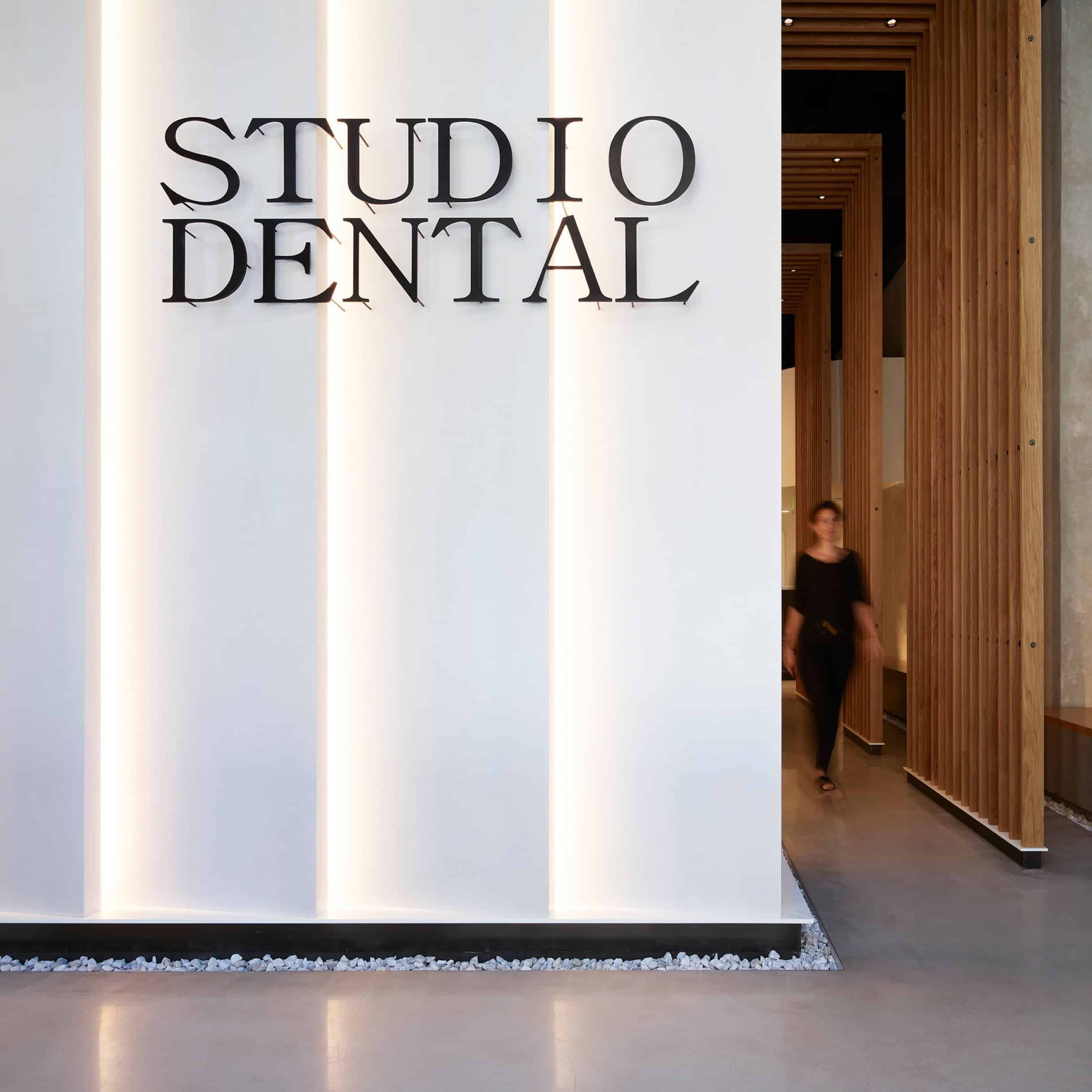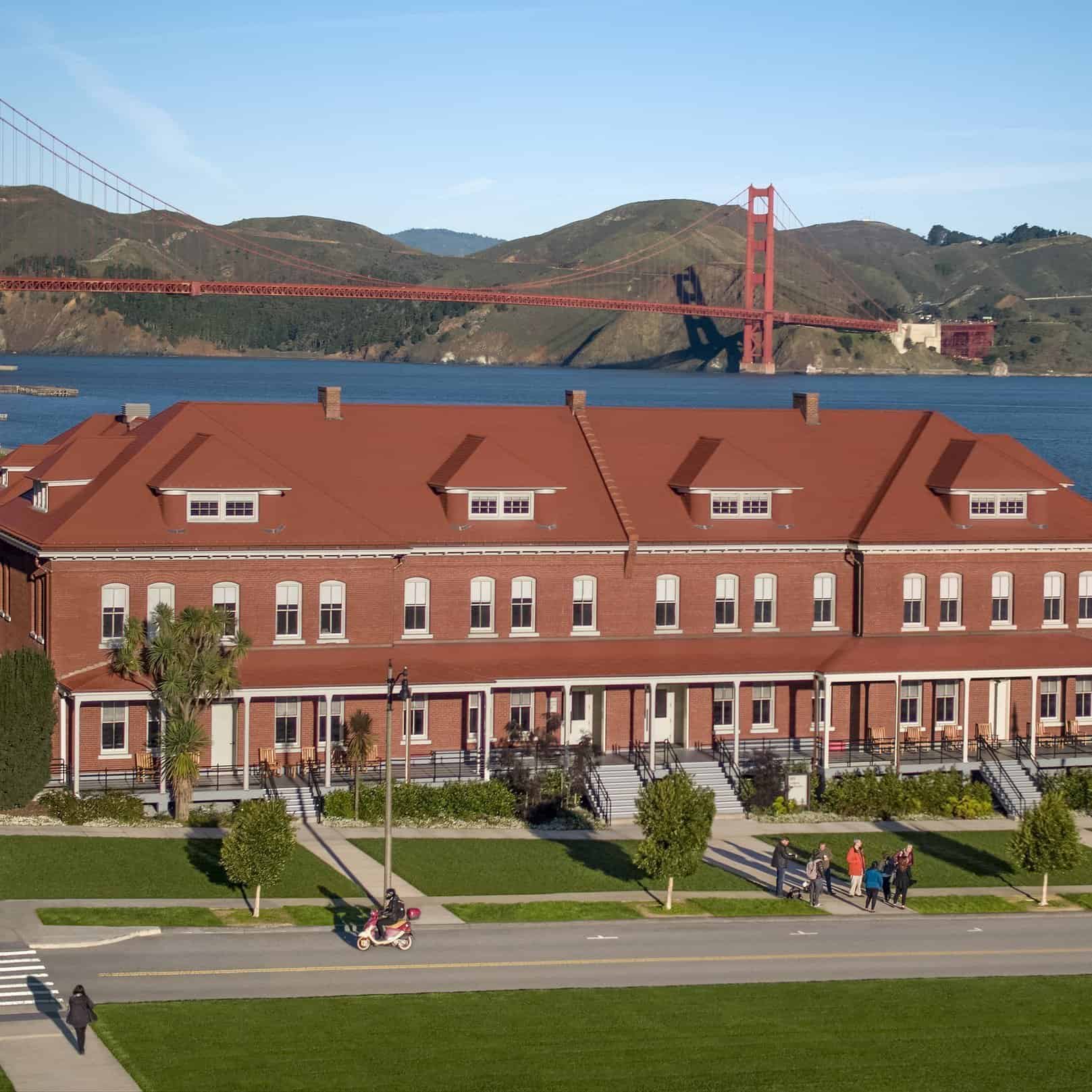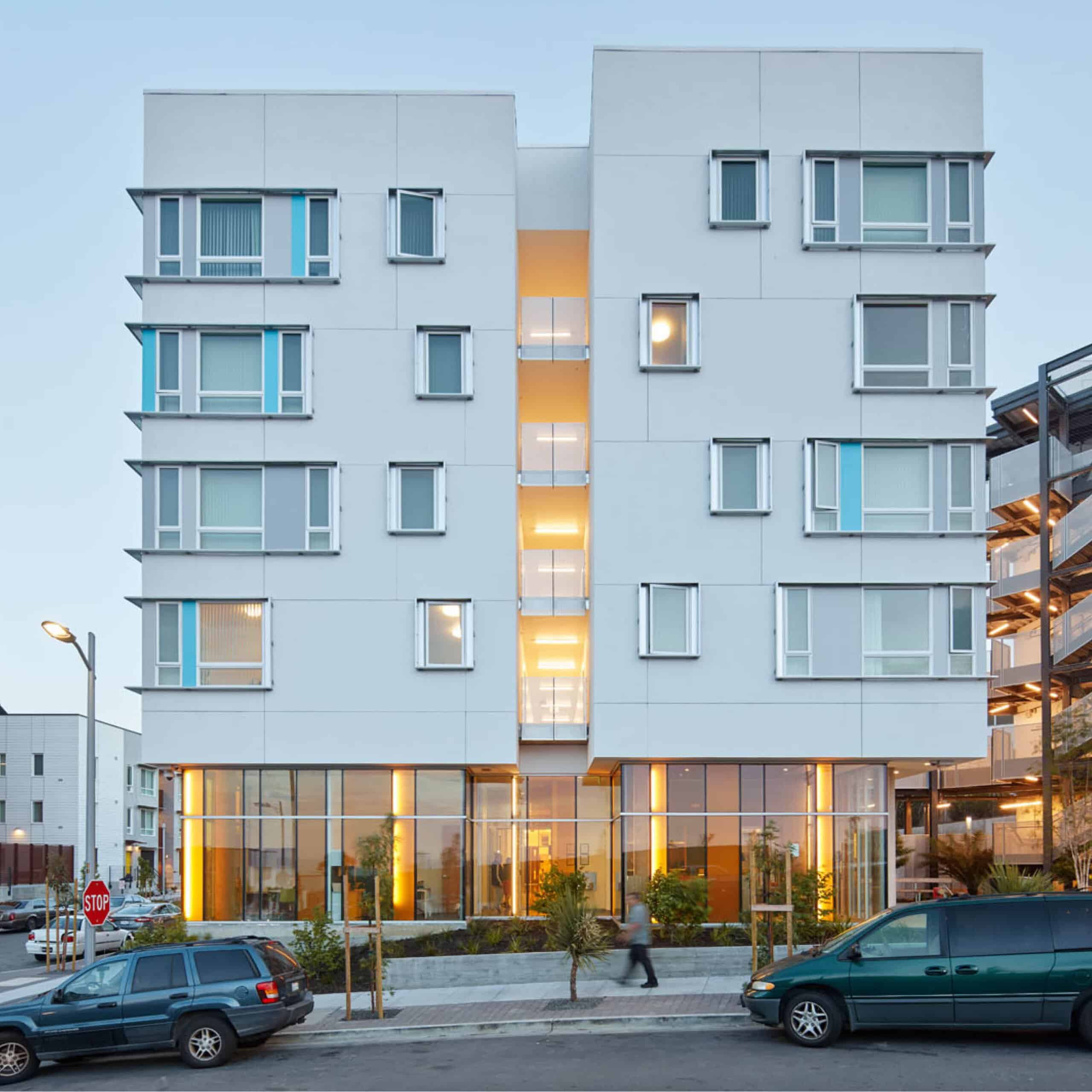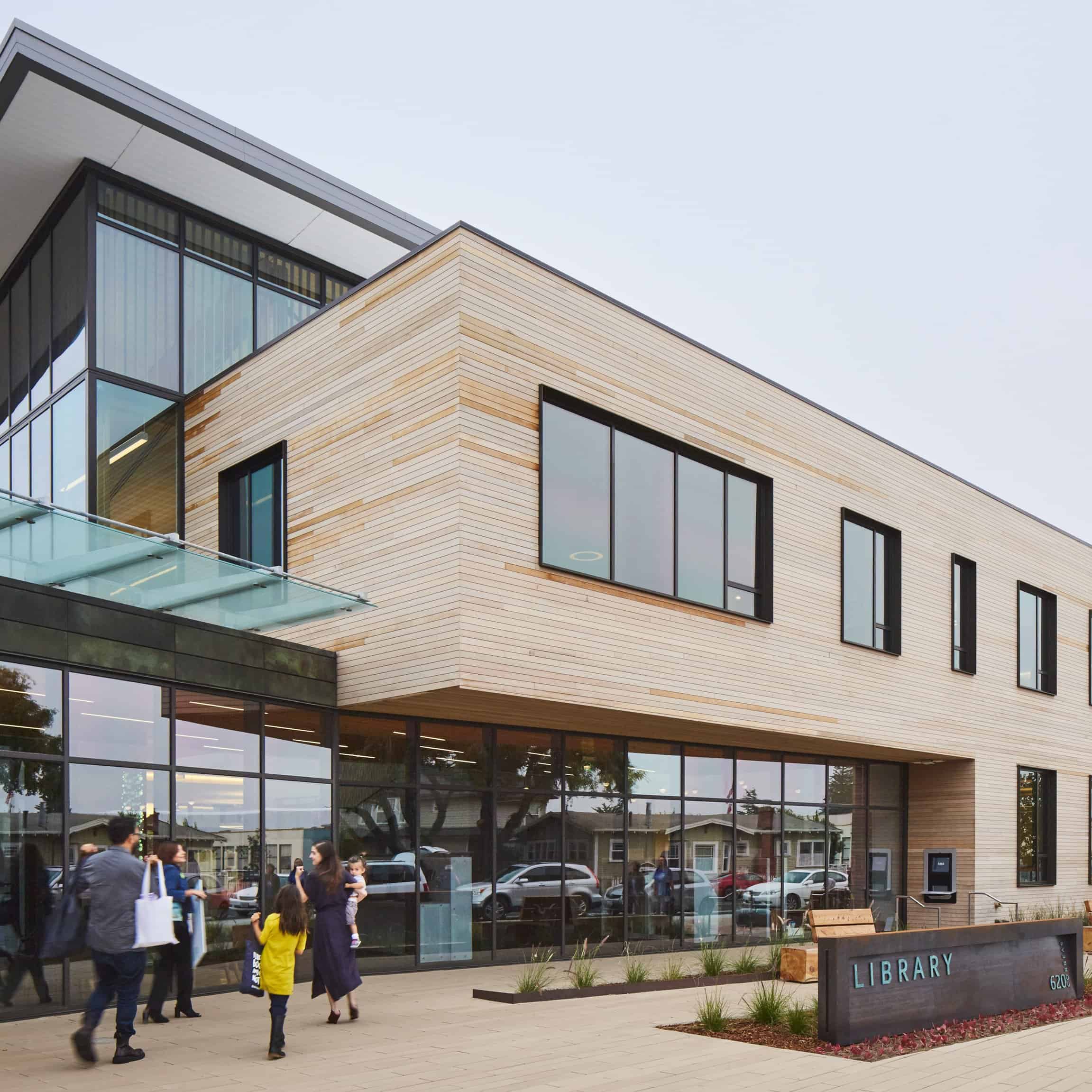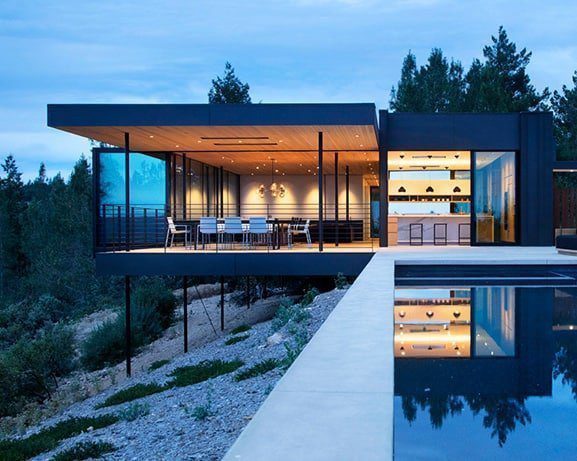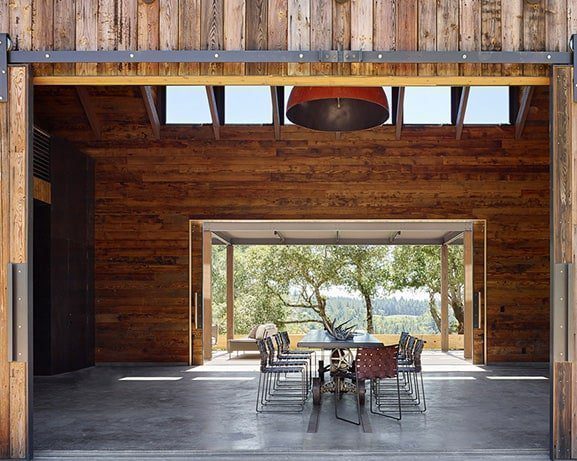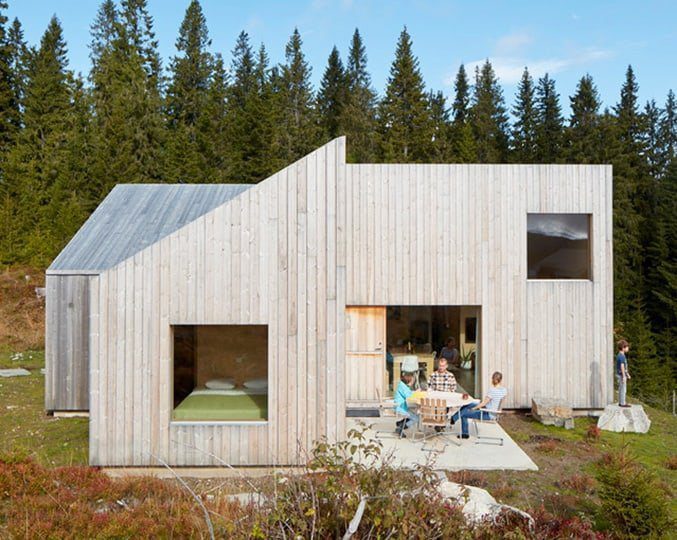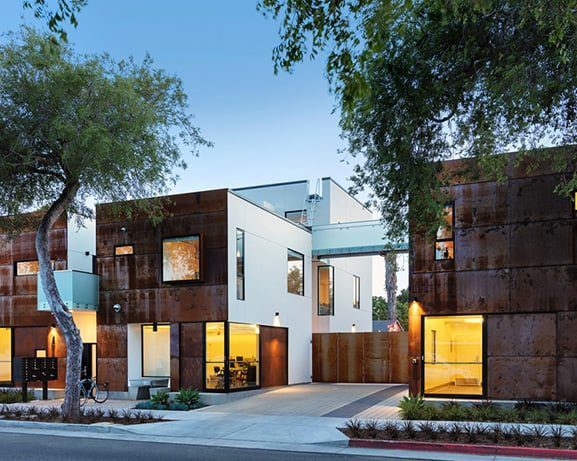-
Design Awards
2019 Urban Transformation Special Commendation Award
1100 Ocean Avenue Supportive Family and Transitional-Aged Youth Housing | Herman Coliver Locus Architecture | © Bruce Damonte Photography -
Design Awards
2019 Commitment to Community Spaces Special Commendation Award
901 Fairfax Avenue | Paulett Taggart Architects + David Baker Architects | © Bruce Damonte Photography -
Design Awards
2019 Interior Architecture Citation Award
Confidential Financial Services Firm | Gensler | © Jason O'Rear Photography -
Design Awards
2019 Interior Architecture Citation Award + Social Responsibility Commendation
El Pípila | Schwartz and Architecture | © Bruce Damonte Photography -
Design Awards
2019 Sustainable Community Infrastructure Special Commendation Award
Half Moon Bay Library | Noll & Tamm Architects | © Anthony Lindsey Photography
In existence for half a century, AIA San Francisco’s Design Awards program recognizes the outstanding achievements in architecture and design of Bay Area individuals and organizations, and celebrates the distinguished work of architects and related professionals from afar who contribute to the framework of our local built environment. The program serves to inform the public of the breadth and value of architectural practice.
Previous AIASF Design Awards Recipients
2024 AIASF Design Awards
View the photo gallery featuring 2024 AIASF Design Awards Recipients
HONOREE GALLERYRead the press release announcing 2024 AIASF Design Awards Recipients
PRESS RELEASE2023 AIASF Design Awards
ELIGIBILITY + SUBMISSION REQUIREMENTS | JURY | QUESTIONS | CEREMONY
[The call for submissions to AIA San Francisco's 2023 Design Awards program is closed]
ENTRY FEES + DEADLINES
Entry fees are non-refundable. Submissions must be fully completed and entered on or before the Early Submission Deadline in order to qualify for the discounted submission fees rates.
Early Submission Deadline: January 27, 2023 at 5:00 pm (PST)
AIASF Member Submission: $230
General Submission: $420
Full-Time Architectural and Design Students (with ID): $10
Extended Deadline: February 17, 2023 at 5:00 pm (PST)
AIASF Member Submission: $285
General Submission: $475
Full-Time Architectural and Design Students (with ID): $40
Submissions
The Design Awards submission is structured into main categories and optional concentrations. In addition to the design awards given in each main category – Architecture, Interior Architecture, and Unbuilt Design – the jury may also choose to recognize projects that exhibit special achievements in four concentrations, giving special acknowledgement to projects that further encompass the values of good design within the context of historic preservation, social responsibility, technology excellence, and urban design.
With this format we hope to demonstrate that all of these disciplines explored collectively, rather than independently, strengthen the overall power and scope of architecture to help shape the built environment and enrich the human spirit.
In recognition of the importance of sustainable design, AIASF instituted a separate award category for energy and sustainability in 2003. In the last several years, the profession as a whole has transformed the way it designs, builds, and maintains buildings. The Design Awards program now incorporates the fulfillment of sustainable design principles into all categories.
Award Briefs
The Architecture Award recognizes and celebrates outstanding achievements in architecture. At the jury’s discretion, this category will honor multiple projects, featuring Citation, Merit, and Honor Award recognitions. Submissions will be judged on quality of design; resolution of the program or idea; and innovation, thoughtfulness, and technique. No field trips will be taken; jury decisions will be based solely on the materials submitted. It is therefore important that submissions convey to the jury a full understanding of the project. Each entry in the AIA San Francisco Design Awards program is judged on the success with which it has met its individual requirements. Entries are weighed individually, not in competition with others.
The Interior Architecture Award recognizes excellence in interior architecture. At the jury’s discretion, this category will honor multiple projects, featuring Citation, Merit, and Honor Award recognitions. Submissions will be judged on quality of design; resolution of the program or idea; and innovation, thoughtfulness, and technique. No field trips will be taken; jury decisions will be based solely on the materials submitted. It is therefore important that submissions convey to the jury a full understanding of the project. Each entry in the AIA San Francisco Design Awards program is judged on the success with which it has met its individual requirements. Entries are weighed individually, not in competition with others.
The Unbuilt Design Award recognizes purely theoretical architectural design work. At the jury’s discretion, this category will honor multiple projects, featuring Citation, Merit, and Honor Award recognitions. Submissions will be judged on quality of design, resolution of the program or idea, and innovation, thoughtfulness, and technique. Jury decisions will be based solely on the materials submitted. It is therefore important that submissions convey to the jury a full understanding of the project. Each entry in the AIA San Francisco Design Awards program is judged on the success with which it has met its individual requirements. Entries are weighed individually, not in competition with others.
Eligibility
- Awards open to AIA San Francisco members as well as nonmembers.
- Any person or firm is eligible to submit projects located within the boundaries of AIA San Francisco (San Francisco and Marin Counties, or within a 30-mile radius of San Francisco).
- Any person or firm practicing within the AIA San Francisco boundaries (San Francisco or Marin Counties, or within a 30-mile radius of San Francisco) is eligible to submit projects located outside the area; if a firm has multiple offices, only projects designed and executed by an office within the AIASF boundaries are eligible.
- A project that has previously won an award in other awards programs is eligible, unless the project was previously honored with any AIA San Francisco Design Award.
- Any number of projects can be entered regardless of project size, budget, style, or building type, and submissions may include remodeling or extended use projects.
- Work by the firm of a design professional serving as a juror is ineligible.
- For built projects, construction must have been completed within three years of the final submission deadline.
- For the Unbuilt Design projects, the design must be within three years of the final submission deadline.
Do not include information identifying your firm in any materials outside of those designed to collect it, like the Design Team Form and fields on the submission site defined for this purpose. File names should not include your firm name. If any of the information provided to the jury for review – including file names – explicitly identifies the firm, your submission will be disqualified.
- Project Name
- Floor Area in Square Feet
- Building Type
- Date of Completion
- Project Cost
- Location of Project
- 50-word Summary: This should be approximately two sentences on the project. Copy should be clear, concise, and well written, as it may be reproduced in print publications.
- 250-word Summary: This should fully outline the program and design objectives and how the project addressed these objectives.
- Building Performance Data: AIASF has adopted AIA CA’s “Common App” as part of the submission requirements to help identify how each project responds to the urgency of climate action given the broad impacts the built environment places on both people and planet. Please be sure to use the current version of the Common App available here. For further requirements and guidance on completing the Common App as part of your submission, visit the AIASF website here. Please note that some of the technical information requested on the Common App may require consultation with your engineer, and take this into account when preparing your submission.
- Demolition Plan: For Historic Preservation Concentration Only.
- Site Plan: Show context and include North arrow. JPEG format.
- Floor Plans: JPEG format.
- Annotated diagram or section: Optional; describe the overall design concept and/or sustainable
features. JPEG format. - Additional Sections/Elevations: Optional; maximum two. JPEG format.
- Additional Diagrams: Optional; maximum two. JPEG format.
- Images: Up to 10 images of the completed project. Artwork should be saved to at least 300 dpi. You may submit up to two composite images (image files featuring multiple images). JPEG format. Do not include labels on the images. Credit photography in the Design Team section; these images will be reproduced in conjunction with recognition if the project is selected to receive an award.
- Design Team: Should the project be selected for an award, project contributors will be publicly announced per the Design Team information provided with the submission. This information will otherwise remain exclusively for AIASF internal use. When not included in the Design Team form, AIASF is not responsible for missing project team member credits on awarded projects; make sure to include a comprehensive list of the subs on your projects, and feel free to add categories as needed. VIEW SAMPLE TEMPLATE
Design Awards Concentrations
The AIA San Francisco Design Awards program is structured into categories and concentrations. By highlighting concentrations, we aim to give special acknowledgement to projects that further encompass the values of good design within the context of historic preservation, social responsibility, technology excellence, and urban design.
With this format we hope to demonstrate that all of these disciplines explored collectively, rather than independently, strengthen the overall power and scope of architecture to help shape the built environment and enrich the human spirit.
In recognition of the importance of sustainable design, AIASF instituted a separate award category for energy and sustainability in 2003. In the last several years, the profession as a whole has transformed the way it designs, builds, and maintains buildings. The Design Awards program now incorporates the fulfillment of sustainable design principles into all categories.
Include a demolition plan + the following information in your 250-word summary:
- Description of preservation, rehabilitation, or restoration treatments employed; research undertaken; or difficult problems overcome.
- If the property was threatened, identification of the type and degree of the threat to the property. Note any special efforts or plans to ensure future protection of the property.
- Description of innovative approach to design, materials, technique or interpretation.
- Description of principles of sustainability that were incorporated in the project.
- Demonstration that the completed project enhances or extends the life of the resource.
Include information explaining how your project integrates effective social outcomes with the highest level of design excellence by responding to a need and/or addressing one or more of the following in your 250-word summary:
- Community Engagement – an entire community and/or representative stakeholders are substantially involved and engaged in the decision-making processes, and community involvement has influenced project outcomes.
- Community Benefit – project addresses a need(s) and demonstrates benefit(s) to the community.
- Economic Disparity – architecture or the design process has reduced disparities in the economics of the larger community or individuals served by the project.
- Health Outcomes – project improves health, safety, or well-being outcomes for the larger community or individuals served by the project.
- Educational Inequity – project addresses inequities in our education system and those that increase the social responsibility of education.
- Human Rights – project helps vulnerable populations and disadvantaged people realize their basic rights, to those that actively violate the rights of life and liberty.
- Other innovative approaches outside of what is listed here, for example:
- Increasing community resiliency
- Celebrating place, culture or history
- Minimizing displacement
- Increasing racial equity
Include information explaining how your project addresses one or more of the following in your 250-word summary:
- Excellence in project-related work thanks to the technical aspects of building design, including conceptualization, design, and implementation of buildings; or the technology aspects of building design from an engineering and construction standpoint.
- Technology that greatly improved collaboration, innovation, and creativity, and led to architectural excellence in the project design or outcome.
- Technology that resulted in improved economic, environmental, or social outcomes of the project.
In your 250-word Summary, address how the design:
- responds to the existing urban and/or regional context;
- contributes to the community connectivity, such as public transit access, automobile trip reduction, and walkability;
- provides an example of increasing density in an existing lower-density urban neighborhood;
- demonstrates commitment to urban sustainability and climate resiliency;
- and/or pays tribute to innovation in placemaking.
Jury Selection Team
Anne Fougeron, FAIA, Principal | Fougeron Architecture
Craig Hartman, FAIA, Senior Consulting Design Partner | Skidmore, Owings & Merrill
Liz Ranieri, FAIA, Managing Principal | Kuth Ranieri
Takashi Yanai, FAIA

Takashi Yanai is a Partner at Ehrlich Yanai Rhee Chaney Architects and has been Residential Studio Director since 2004. Takashi is also currently leading EYRC’s San Francisco Studio.Prior to practice, Takashi was a design journalist and editor at GA Houses in Tokyo where his work and travels provided the seeds for his design philosophy. Today his work is rooted in its contemplative relationship to landscape and is a continuation of the California Modernist ethos infused with reinterpretations of traditional Japanese elements. In 2017 he was elevated to the AIA College of Fellows in recognition of his residential work, which articulates how architecture can “connect man and nature through masterful siting and exceptional craft.” Takashi serves on the SFMOMA Photography Accessions as well as the Architecture+Design Accessions Committees and has also been appointed the Chair of the National AIA Committee on Design for 2021.
Meryati Johari Blackwell, AIA, ASID, LEED AP
 Meryati Blackwell, AIA, ASID, LEED AP, is a Principal and the Director of Interiors at Marlon Blackwell Architects. Ati has been a guiding force in the growth of MBA, helping to transform the firm from a sole proprietorship to a thriving international practice it is today. She continues to work closely with Marlon and project teams to deliver thoughtful and award-winning designs that are both sensual and sensible.
Meryati Blackwell, AIA, ASID, LEED AP, is a Principal and the Director of Interiors at Marlon Blackwell Architects. Ati has been a guiding force in the growth of MBA, helping to transform the firm from a sole proprietorship to a thriving international practice it is today. She continues to work closely with Marlon and project teams to deliver thoughtful and award-winning designs that are both sensual and sensible.
Jonathan Moody, AIA, NOMA, NCARB, LEED AP

As the leader of one of the profession’s storied firms, Jonathan Moody, AIA, is guided by his focused mission to deliver transformational design to underserved communities across the country. Like his father before him, Moody has faced discrimination and a lack of diversity in the profession head on. Bolstered by the challenges he has overcome, Moody has positioned himself as a presence in the communities he serves and a leader at all levels. Moody grew up in Columbus, Ohio, in an architect’s household; his father, Curtis Moody, FAIA, told him stories of the challenges he faced as an aspiring Black architect. Later, Moody found himself in a similar position as a Black athlete who leveraged sports as a way to pursue his studies. When he earned a spot on Cornell University’s football team, he was warned that it would be impossible for him to compete and earn his bachelor’s degree at the same time. Moody played football for all four years, became the school’s scholar athlete of the year and recognized with Cornell’s Bronze Alpha Rho Chi Medal, which honors graduating architecture students for their leadership and service.
Katherine Chia, FAIA

Katherine Chia, FAIA, is a founding principal of Desai Chia Architecture. Since 1996, she and her partner & husband, Arjun Desai, have established the firm’s reputation for authentic design, creating inspiring environments expressive of light, materials, and spaces that foster collaboration; Desai Chia’s portfolio includes cultural, residential, commercial & institutional projects as well as commissions for product design and collaborations with artists. Desai Chia’s projects have been published extensively and received numerous accolades including numerous AIA and American Architecture Awards, Interior Design Best of Year Awards, Good Design Awards, and an AIA Institute Honor Award. Throughout her career, Katherine Chia FAIA has worked on projects that require an ever-evolving, inter-disciplinary approach — weaving together site, community, and culture into a range of inspiring buildings and environments. Her projects extend from Manhattan to Singapore, and many locations in between.
Kevin Daly, FAIA, NCARB, LEED AP

Over his thirty-year career, Kevin has defined a design process that upholds the practical magic of architecture – an alchemical conjunction of craft, materials, and form. Bolstered by abundant research, he has demonstrated the benefits of advanced, unconventional building technology in works that are consistently recognized in publications and awards, and range from public schools and affordable housing to university buildings and custom residences. Kevin is particularly recognized for reclaiming and transforming sites characteristic of the postwar city, turning generic background buildings into models of community identity. Projects by Kevin Daly express his belief in an architecture that is performative on every level: environmentally, structurally, economically, and aesthetically. Kevin has established a critical practice that is nationally recognized and simultaneously engages the profession as well as the local community. Almost every project has been published nationally or received awards for design excellence. He has served on numerous AIA awards juries, won the first AIA/LA Firm of the Year Award, held distinguished university chairs at Berkeley and Michigan, and is a regular faculty member at UCLA. Through his teaching he fosters a next generation of architects across the country.
The Common App
AIASF has adopted AIA California's "Common App" as part of the submission requirements to help identify how each project responds to the urgency of climate action given the broad impacts the built environment places on both people and planet. Please be sure to use the current version of the Common App available here. For further requirements and guidance on completing the Common App as part of your submission, visit the AIASF website here. Please note that some of the technical information requested on the Common App may require consultation with your engineer, and take this into account when preparing your submission.
Common App Webinar: join AIA San Francisco’s Committee on the Environment (COTE) for a conversation around the submission requirements for the Common App component in AIASF’s Design Awards program, and the technical review of the Common App that all entries will undergo.
The session is led by COTE co-chairs Mark Kelly, AIA, and Charlie Stott, AIA, with Vaclav Hasik of Building Transparency, and includes audience Q+A.
Sustainability Advisory Team
Charlie Stott, AIA, LEED AP, Principal, Stott Architects
Mark Kelly, AIA, LEED AP BD+C, Associate Principal, Director of Sustainability, BAR Architects & Interiors
Design Awards Tech Review Team
Anish Tilak, LEED AP, CNARB, Manager, Rocky Mountain Institute
Ben Welty, NCARB, Senior Associate & Sustainability Integration Leader, Feldman Architecture
Carla Dal Mas, Architect, tNLP Wellness Practitioner, Principal, Cadima Strategia
Erin Feeney, AIA, LEED AP, NCARB, Associate, David Baker Architects
Hilary Noll, AIA, LEED AP BD+C, Fitwel Ambassador, NCARB, Associate Principal, Mithun Architects
Jasen Bohlander, AIA, LEED AP, Senior Associate, LMS Architects
Justin Glover, AIA, LEED AP, Fitwel Ambassador, NCARB, Associate Principal, STUDIOS Architecture
Karl Vavrek, AIA, PE, LEED AP, NCARB, Project Architect, Quattrocchi Kwok Architects
Kirstin Weeks, LEED AP BD+C, WELL AP, Living Future AP, Principal, BioStudio
Mattison Ly, AIA, LEED AP, Assoc. DBIA, NCARB, Associate Principal, Brick Architecture
Megan Stringer, SE, LEED AP BD+C, Associate Principal, Holmes Engineers
Miya Kitahara, Program Manager, StopWaste
Pauline Souza, FAIA, LEED Fellow, WELL AP, LFA, NCARB, Partner & Director of Sustainability, WRNS Studio
Steve Gross, PE, Principal, Interface Engineering
Yusheen Yang, Senior Designer, Jensen Architects
2023 Design Celebration
Save the Date: Thursday, May 4 | 6:00 - 9:00 PM
Herbst Theatre (Presentation) | The Green Room (Reception)
AIASF is celebrating excellence in Architecture and Design with one of the Chapter’s biggest events. Join the Bay Area's built environment community in-person for a special evening, including recognition of this year’s Design Awards recipients. Stay tuned for more information!
Redeem AXP Credit Hours
AXP candidates can receive credit hours for design competition entries. Candidates should fill out the Design Competition Verification form. This form is to certify that the AIASF Design Awards program meets the requirements of completing a design competition for AXP credit as defined in the AXP Guidelines.
For information on AXP Experience reporting, visit NCARB's AXP Guidelines.
Questions
Questions about your eligibility or the submission process? View our FAQ page
Submissions inquiries
Claire Hansen, AIASF Programs Associate
chansen@aiasf.org
Sponsorship
Be part of the Bay Area's built environment community and participate as a sponsor of the 2023 AIASF Design Awards!
Sponsorship inquiries
Raul Orellana, AIASF Development Associate
rorellana@aiasf.org
General inquiries
info@aiasf.org
AIASF Design Awards Recipients
-
2023 Architecture
Honor Award
603 Tennessee
Stanley Saitowitz | Natoma ArchitectsHonor Award
Caymus-Suisun Winery
Bohlin Cywinski JacksonHonor AwardHonor Award
Suspension House
Fougeron ArchitectureMerit Award
212 Tucker
Stanley Saitowitz | Natoma ArchitectsMerit Award
Sister Lillian Murphy Community
Paulett Taggart Architects + Studio VARAMerit Award
SFO Harvey Milk International Terminal
Gensler | Kuth Ranieri Architects Joint Venture with HKS | Woods Bagot | ED2 | KYA, Hamilton + Aitken ArchitectsMerit Award
Tahanan Supportive Housing
David Baker ArchitectsMerit Award
The Prow
Aidlin Darling DesignCitation Award
The Hamlin School
Mark Cavagnero AssociatesCitation Award
La Selva Beach Library
Jayson ArchitectureCitation AwardCitation Award
Seventh Street Residence
Sidell Pakravan Architects2023 Interior Architecture
Honor Award
Dropbox Headquarters
Johnston Marklee / HGACitation Award
Inclusive Capital Partners
jones | haydu / Evans Design StudioCitation Award
LFA Gallery
Cary Bernstein Architect2023 Unbuilt Design
Merit Award
Fremont Theater Adaptive Reuse
Studio Skaggs KennedyCitation Award
Reprogramming Suburbia - Patio House
Gary Yun-LeeCitation Award
Hidden Room
Min Design2023 Commendation
Historic Preservation
MacLac Building D - Rebirth of An Historic Paint Factory
Marcy Wong Donn Logan Architects with PLAD (Peter Logan Architect & Design)Technology Excellence
International Arrivals Facility at Seattle-Tacoma International Airport (IAF at SEA)
Skidmore, Owings, and Merrill + Miller Hull Partnership + Patano Studio -
2022 Architecture
Honor Award
1 De Haro
Perkins&WillMerit Award
633 Folsom
GenslerMerit Award
CAMPout
Faulkner ArchitectsMerit Award
Cole Valley Residence
JENSEN ArchitectsMerit Award
Kol Emeth
Field Architecture
Architect of Record: EID ArchitectsMerit Award
Tetherow
Mork-Ulnes ArchitectsMerit Award
Twin Peaks Residences
Michael Hennessey ArchitectureMerit Award
Valley Rock ADU
S^A | Schwartz and Architecture2022 Interior Architecture
Merit Award
Eolian Clean Energy Headquarters
Axelrod DesignMerit Award
Faust Haus
Aidlin Darling Design2022 Unbuilt Design
Merit Award
Berkeley OG-Ex Housing (Ohlone Greenway Extension)
Sidell PakravanMerit Award
Small Infrastructures
Sidell Pakravan
JaJa CoCitation Award
PLA
SAW // Spiegel Aihara Workshop2022 Commendation
Historic Preservation Commendation
San Francisco Animal Care & Control
San Francisco Public Works, Bureau of ArchitectureSocial Responsibility Commendation
La Fénix at 1950
David Baker Architects
with Cervantes Design AssociatesSocial Responsibility Commendation
The Hive
Group 4 Architecture, Research + Planning
Integrus ArchitectureUrban Design Commendation
Willie “Woo Woo” Wong Playground
CMG Landscape Architecture
JENSEN ArchitectsEnvironmental Campus Design Special Commendation
Microsoft’s Silicon Valley Campus
WRNS Studio2022 People's Choice
Over $10M
The Harvey B. Milk Terminal
Gensler | Kuth Ranieri Joint Venture, HKS | Woods Bagot | ED2 | KYA, Hamilton + Aitken ArchitectsUnder $10M
Brisbane Library
Siegel & Strain Architects
Karin Payson architecture + design
-
2021 Architecture
Honor Award
Sebyeol Brewery
YKH AssociatesMerit Award + Public Design Commendation
Oakland Museum of California
Mark Cavagnero AssociatesMerit Award
Westwood Hills Nature Center
HGAMerit Award
Stanford Residence
JENSEN ArchitectsMerit Award
49 South Van Ness
Skidmore, Owings & MerrillCitation Award + Social Responsibility Commendation
222 Taylor
David Baker ArchitectsCitation Award
San Francisco State University George and Judy Marcus Hall for the Liberal and Creative Arts
Mark Cavagnero AssociatesCitation Award
Natoma
MAK Studio2021 Interior Architecture
Merit Award
Nobu Hotel Palo Alto
Montalba Architects2021 Unbuilt Design
Merit Award
The Courtyard House
AÇA2021 Commendation
Historic Preservation Commendation
Geneva Car Barn & Powerhouse
Aidlin Darling Design
Social Responsibility Commendation
Balboa Park Pool Renovation
ELS Architecture and Urban Design
Kuth Ranieri Architects
2021 People's Choice
Over $10M Award
Outer Mission Ramp Library
Yi-Hsien (Rachel) WangUnder $10M Award
Tiny House in West Marin County
Robert Nebolon Architects
-
2020 Architecture
Honor Award
SF State Mashouf Wellness Center
WRNS StudioHonor Award
Skigard Hytte
Mork Ulnes ArchitectsMerit Award + Urban Design Commendation
855 Brannan
David Baker ArchitectsMerit Award
Better Place Forests
OpenScope StudioMerit Award
Goto House
IwamotoScott ArchitectureMerit Award
Larkin Street Substation Expansion
TEF DesignMerit Award
Lick-Wilmerding High School Historic Renovation & Expansion
EHDDCitation Award
High Desert Retreat
Aidlin Darling DesignCitation Award
Moscone Center Expansion
Skidmore, Owings & Merrill
Mark Cavagnero AssociatesCitation Award
PG&E Potrero
Stanley Saitowitz | Natoma ArchitectsCitation Award
The Bechtel Family Center for Ocean Education and Leadership for Monterey Bay Aquarium
Mark Cavagnero AssociatesCitation Award
The McClintock Building Adaptive Re-Use
Perkins and Will (formerly Pfau Long Architecture)Citation Award
WETA Richmond Ferry Terminal
Marcy Wong Donn Logan Architects2020 Interior Architecture
Merit Award
One Embarcadero Center Lobby
GenslerCitation Award
Blue Bottle Stanford
Bohlin Cywinski JacksonCitation Award
Dandelion Chocolate Factory
Gensler2020 Unbuilt Design
Merit Award
Bay Area Solar Transit-hub (BAST)
Jang Ock KimMerit Award + Urban Design Commendation
Infilling the Void
Kenta OyeCitation Award
Sublimity of Horror Architecture
Fan Pan2020 Commendation
Social Responsibility Commendation
Caliber Schools ChangeMakers Academy
TEF DesignSocial Responsibility Commendation
The Felipe Alou Baseball Academy
jones | hayduHistoric Preservation Commendation
Uber Advanced Technologies Group R&D Center
Marcy Wong Donn Logan Architects -
2019 Architecture
Honor Award
Monterey Conference Center
Skidmore, Owings & Merrill LLPHonor Award
Ridge House
Mork Ulnes ArchitectsHonor Award
Roseland University Prep
Aidlin Darling DesignHonor Award
Saint Mary's Student Chapel
Mark Cavagnero AssociatesMerit Award
The Amador Apartments
jones | hayduMerit Award
Tree House
Aidlin Darling DesignCitation Award
Kua Bay
Walker Warner ArchitectsCitation Award
SoMa Residence,
Artist Gallery + Studio
Dumican Mosey ArchitectsCitation Award
The O'Donohue Family
Stanford Educational Farm
CAW Architects, Inc.Citation Award
University of California, Merced,
Pavilion at Little Lake
Skidmore, Owings & Merrill LLP2019 Interior Architecture
Merit Award
In Situ
Aidlin Darling DesignCitation Award
Confidential Financial Services Firm
GenslerCitation Award + Social Responsibility Commendation
El Pípila
Schwartz and ArchitectureCitation Award
Studio Dental II
Montalba Architects2019 Commendation
Historic Preservation
Lodge at the Presidio
Architectural Resources GroupUrban Design
Hunters Point Shoreline
envelope A+D
RHAA2019 Special Commendation
Urban Transformation
1100 Ocean Avenue
Supportive Family and
Transitional-Aged Youth Housing
Herman Coliver Locus ArchitectureCommitment to Community Spaces
901 Fairfax Avenue
Paulett Taggart Architects
+ David Baker ArchitectsSustainable Community Infrastructure
Half Moon Bay Library
Noll & Tam ArchitectsUrban Infrastructure Enhancement
Rain
Thurlow Small, Inc.
+ NIO architecten -
2018 Architecture
Honor Award
388 Fulton
David Baker ArchitectsHonor Award
Glen Ellen Aerie
Aidlin Darling DesignHonor Award
Sentinel Ridge
Field ArchitectureMerit Award
Big Ranch Road
William Duff ArchitectsMerit Award
Five88
David Baker ArchitectsMerit Award
Kalihiwai Pavilion
Walker Warner ArchitectsMerit Award
Mylla
Mork Ulnes ArchitectsMerit Award
SBCAST
Macy ArchitectureMerit Award
UCSB, San Joaquin Apartments and Precinct Improvements
Skidmore, Owings & Merrill LLPCitation Award
Bloomfield Artist's Studio + Garage
Levy Design PartnersCitation Award
The Pacific
Handel ArchitectsCitation Award
San Francisco Art Institute at Fort Mason Center
Leddy Maytum Stacy ArchitectsCitation Award
Sonoma Academy Guild + Commons
WRNS Studio2018 Interior Architecture
Merit Award
Alcatraz Photography Studio
Marcy Wong Donn Logan ArchitectsMerit Award
Basix Headquarters
Axelrod DesignMerit Award + Historic Preservation Commendation
Hacienda at Scribe Winery
Schwartz and ArchitectureCitation Award
The Italian Swiss Colony Building Lobby
jones | haydu2018 Special Commendation
Rainwater Collection + Recycling Special Commendation
270 Brannan Street
MSLA + Pfau Long ArchitectureSocial Responsibility Special Commendation
Washington Square Convenience Station
Paulett Taggart Architects

